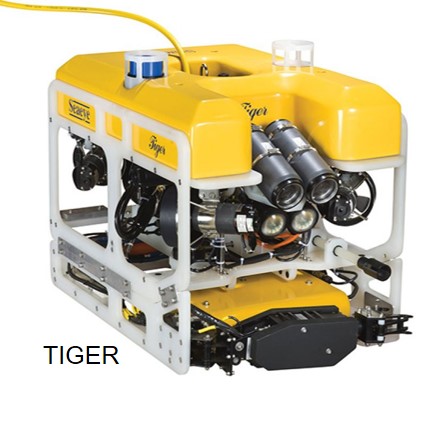Reading time: 5 min
What is a remotely operated vehicle – ROV?
ROVs are part of a family of technologies that humanity has developed since the second half of the twentieth century, whose objective is to facilitate human interactions with the resources found in the depths of fresh or saltwater, where the human being cannot get there on his own.

These technologies include the tools used by scientific divers, satellites that can take images, image processing techniques, vessels with instruments attached to the hull, oceanographic buoys, autonomous vehicles and, of course, the remotely operated vehicles, which are the vehicles that we are going to focus on in the Blog.
What elements make up an ROV system?

- A surface station from where the pilot controls and supervises the operation of the vehicle, and from where power is supplied (not in all types of ROVs). This can be a container or a computer depending on the capabilities of the submarine.
- The umbilical cable through which the orders are transmitted to the vehicle and the information it captures underwater .
- The vehicle a platform where the propellers, sensors, cameras, robotic arms are integrated, as well as everything that is required for these devices to function.
The size and weight of these three elements, as well as the number of people required to operate the entire system, will mainly depend on the depth to which the vehicle can operate and the number of tools and instruments that must be transported.
How are ROVs classified?
ROVs are classified according to their operating capacity as follows: observation vehicles, medium-sized vehicles, work vehicles, and vehicles for special uses.
Observation vehicles
The first ones are characterized by weighing less than 100 kg and being designed for maximum depths of 300 m. They have low power consumption and generally work with direct current, facilitating the use of batteries instead of power plants. Normally these vehicles are used for visual inspection work. That is why they are called “observation”, although today there are light tools and simple actuators that increase the capabilities of these systems to work in shallow water .
Medium-sized vehicles
Medium-size ROVs weigh between 100kg and 1000kg. They are designed for operating depths of up to 1000 m, so they require more power to operate and have the capacity to carry hydraulic tools to take samples and perform other interventions. With these types of systems, they require alternating current generating plants and other auxiliary systems for cable management and vehicle launch. It is also necessary to have underwater positioning and navigation systems.
Work-class ROVs
Work-class ROVs are vehicles that can operate at depths greater than 4 kilometers, can weigh from 1 Ton to more than 4 Tons, and are capable of carrying out complex drilling tasks or other interventions on the seabed. These types of vehicles, along with medium-sized ROVs, are generally used onboard larger vessels, such as oceanographic vessels equipped with cranes.
Finally, special vehicles include all those that, although remotely operated, may have other forms of propulsion or may operate close to the bottom (Bottom crawlers), or simply crawl behind boats (Towed cameras).
The development of these technologies has been mainly driven by the oil market, in fact, currently, the oil & gas industry continues to consume this technology the most, from observation class vehicles to support preventive maintenance and visual inspection tasks, to those work-class vehicles used for intervention work at great depths in the offshore oil fields.
However, as observation class vehicles are getting smaller and more versatile, other markets have begun to take advantage of these technologies to improve their processes.
What do we do at DeepCo with ROVs?
At DeepCo in the ROVs Inspection service we offer:
1. The management of submerged assets
- In ports we facilitate inspections of hulls, submerged port infrastructure, reducing risks for divers;
- We extend the useful life of submerged assets through the analysis of historical data collected with ROVs;
- We strengthen preventive and predictive maintenance tasks, making the analyzed data available to our customers in the cloud.
2. Support the management of ecosystem resources where we facilitate
- The location of critical points to carry out underwater cleaning days and other monitoring tasks;
- Measuring variables of the state of the sites we visit, generating valuable information for their conservation;
- The generation of videos and educational material to encourage the conservation of these environments, in the communities with the greatest impact.
3. Cage fish production (mariculture, aquaculture)
- Periodic inspections of the network, anchors, and anchor lines;
- Measurement of variables that allow knowing the health of the fish in the cultivation area;
- Identification of invasive species.
CONTACT US NOW so we can identify together how to take advantage of the benefits of ROVs within your organization.
“Our philosophy is to strive to transmit and share our knowledge in a transparent and friendly language, for anyone independent of their background, and we hope that with the blog we can transmit a little of what we know“
DeepCo team







